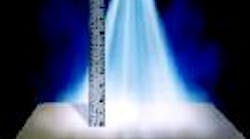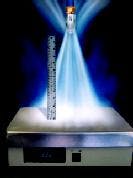The 1/2 NPT Super Air Nozzle delivers 3.3 lb of strong blowing force when mounted 12 in. away from target. Ideal for heavy materials or applications where air nozzle can't be mounted close to surface to be blown off, dried, or cooled. At 80 psig, air consumption is 60 scfm. Sound generation of 87 dBA is below limits for OSHA maximum noise exposure.
Exair Corp.,
(800) 903-9247,
www.exair.com


